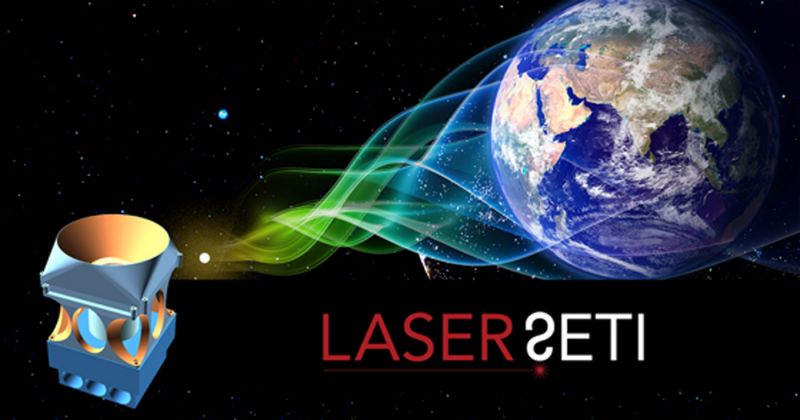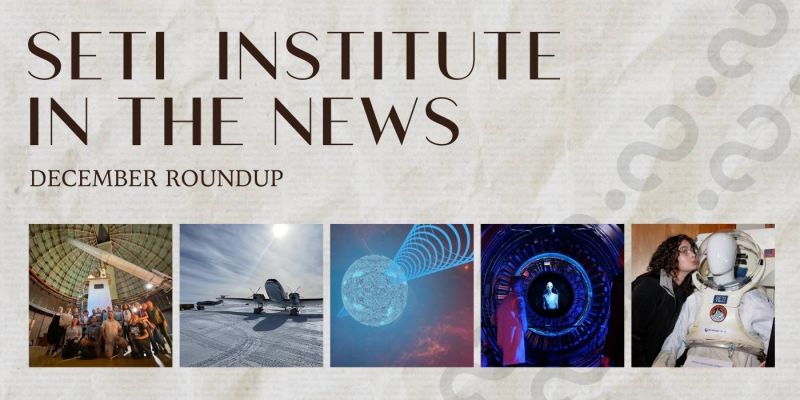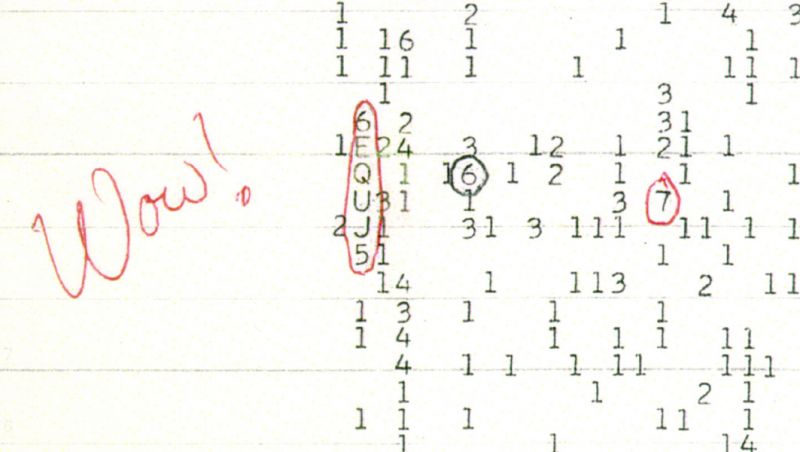
Planetary Picture of the Day
Week of January 6, 2025
This week, we present Mars closeup and in comparison with one of Saturn's moons. Plus, the gorgeous surface of Saturn and Europa rising behind Jupiter.
Monday, 6 January 2025
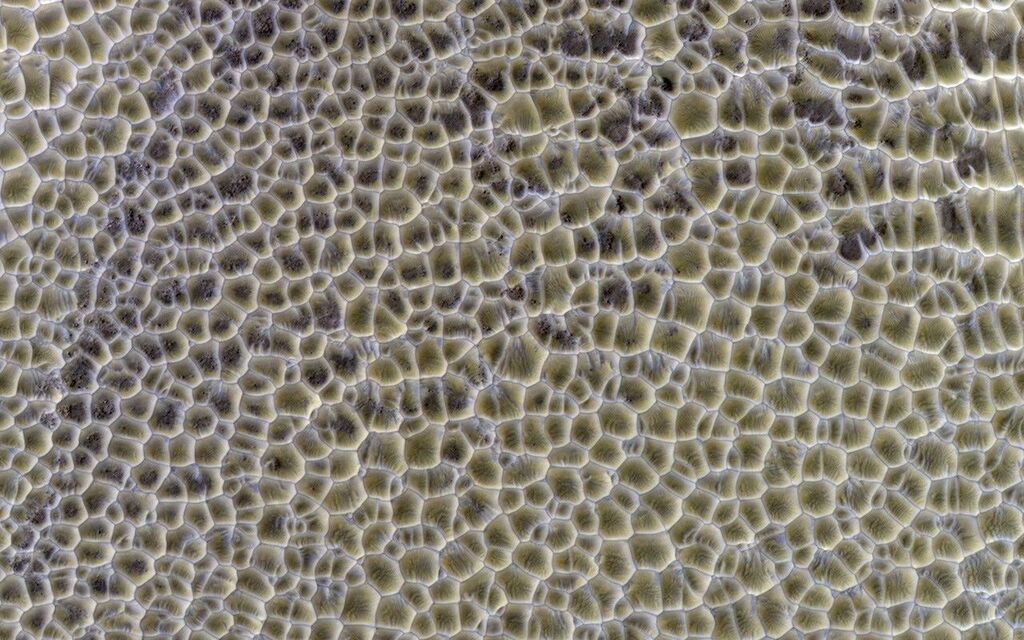
Polygonal Dunes on Mars
Absolutely amazing HiRISE image. Polygons form in nature for many different reasons. In this case, it's due to intersecting dune ridges! If this deposit were to become indurated and eroded, we might not be able, from orbit, to tell that they originated as wind-blown dunes and interpret the polygons as evidence for a dried-up lake, for example. Dunes often accumulate in the bottoms on craters, which is also a good setting for a (temporary) lake. The illumination comes from the upper left, so the bluish ridges are high-standing.
Wednesday, 8 January 2025
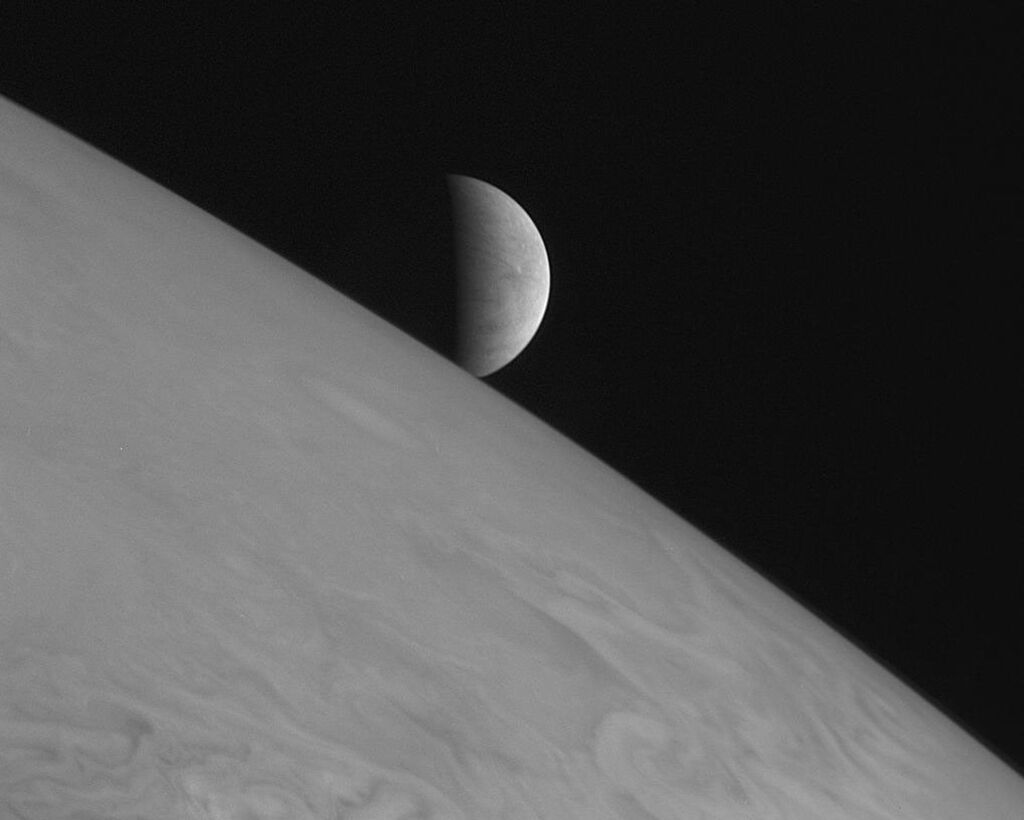
Europa Rising
New Horizons' Long Range Reconnaissance Imager (LORRI) captured this image of the icy moon Europa rising above Jupiter's cloud tops on February 28, 2007, six hours after the spacecraft's closest approach to Jupiter.
The picture was one of a handful of the Jupiter system that New Horizons took primarily for artistic, rather than scientific, value. This particular scene was suggested by space enthusiast Richard Hendricks of Austin, Texas, in response to an Internet request by New Horizons scientists for evocative, artistic imaging opportunities at Jupiter.
When the picture was taken, the spacecraft was 2.3 million kilometers from Jupiter and 3 million kilometers from Europa, which has a diameter of 3,120 kilometers.
Thursday, 9 January 2025
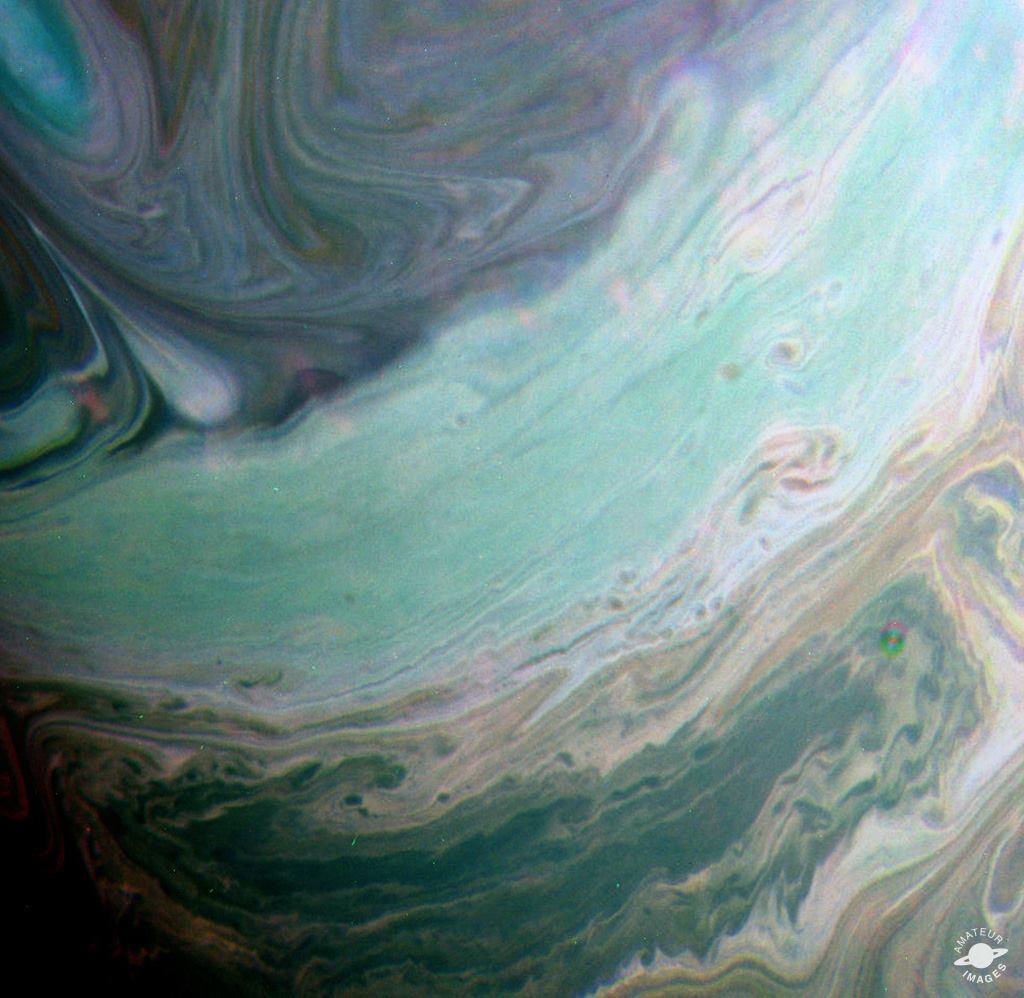
Saturn in the Infrared
In this false-color image from NASA's Cassini mission, clouds may be seen in Saturn's northern hemisphere. The image was created by Kevin M. Gill, a fan of space imaging and an engineer at NASA's Jet Propulsion Laboratory.
The image was created using data collected by Cassini's wide-angle camera on July 20, 2016. It uses a mixture of spectral filters sensitive to infrared light at 750, 727, and 619 nanometers.
These filters have proved helpful throughout Cassini's mission for assessing the structure and depth of cloud structures in the atmosphere because they are sensitive to the absorption and scattering of sunlight by methane in Saturn's atmosphere.
Friday, 10 January 2025
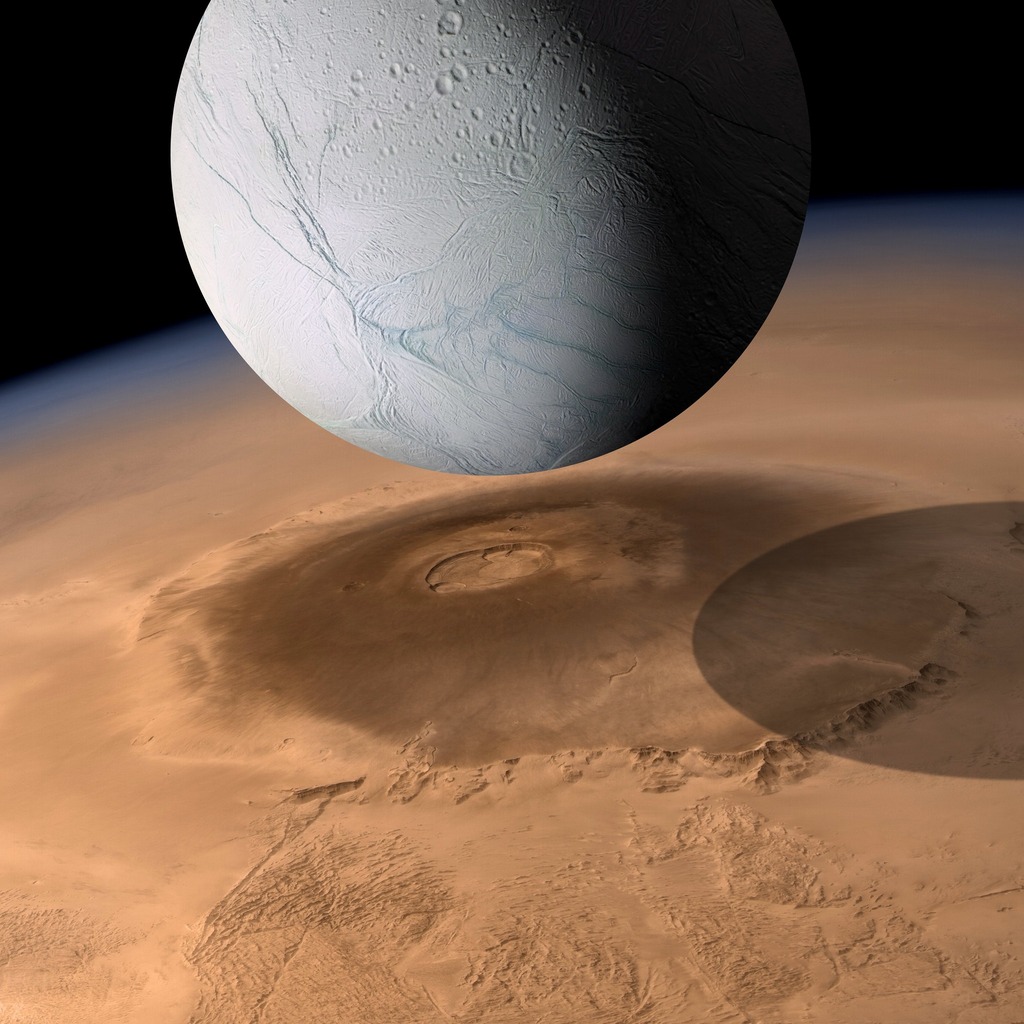
Size Comparison
A reminder that the Olympus Mons volcano on Mars is wider (590 km) than Saturn's icy moon Enceladus (504 km). (This image is obviously a composite.) Have a good weekend, everyone!

